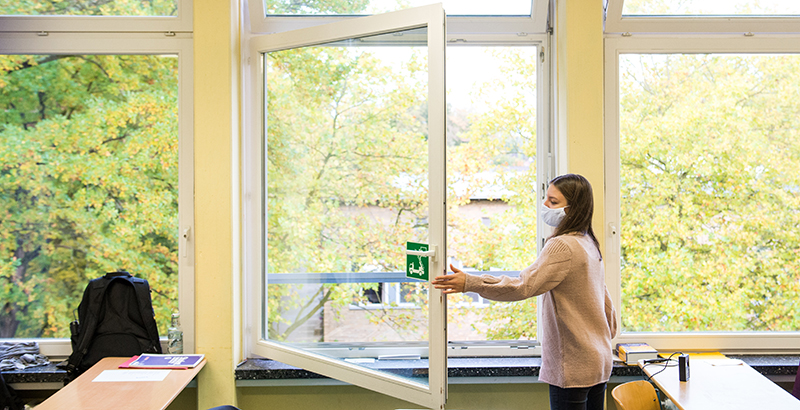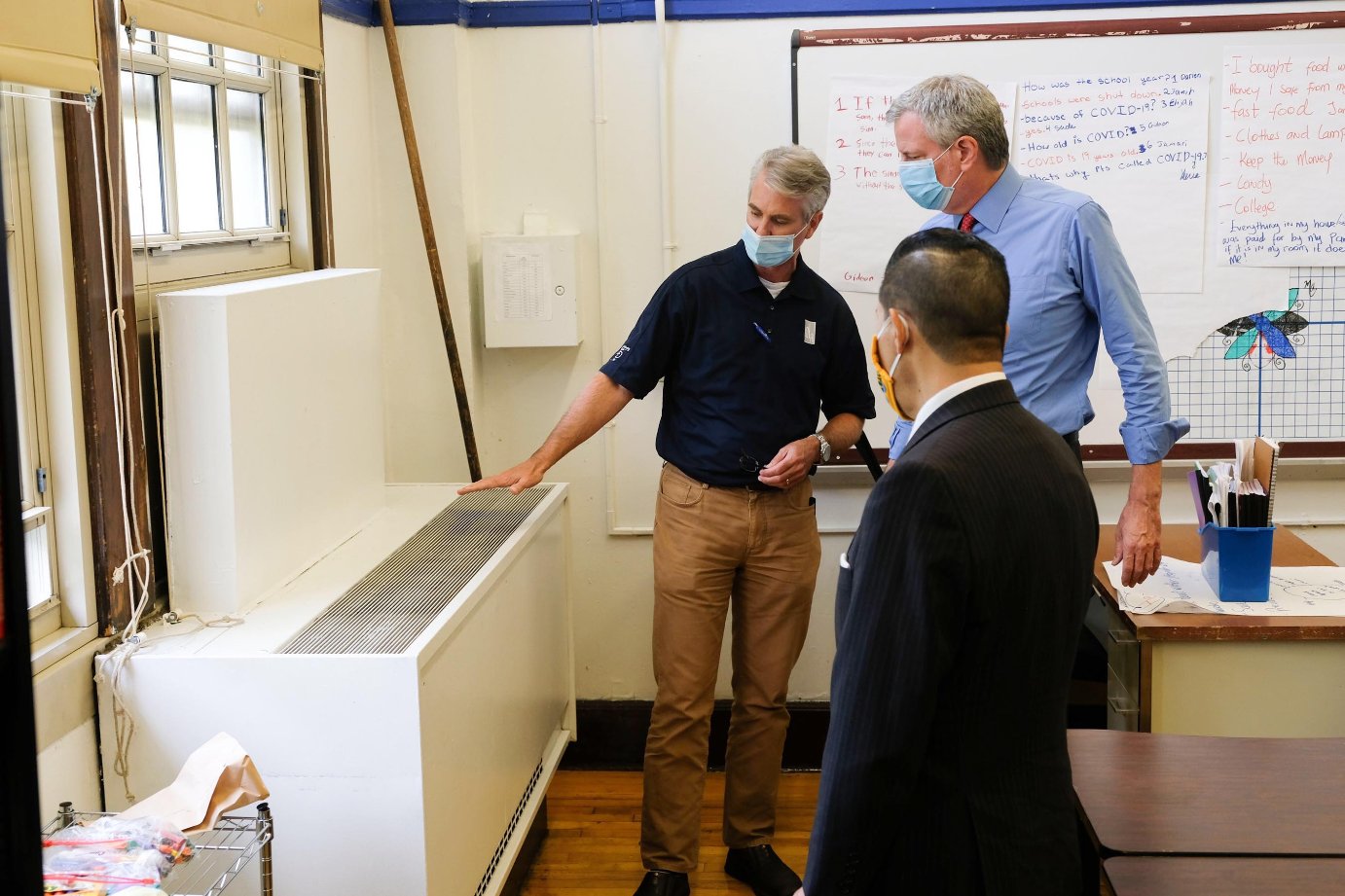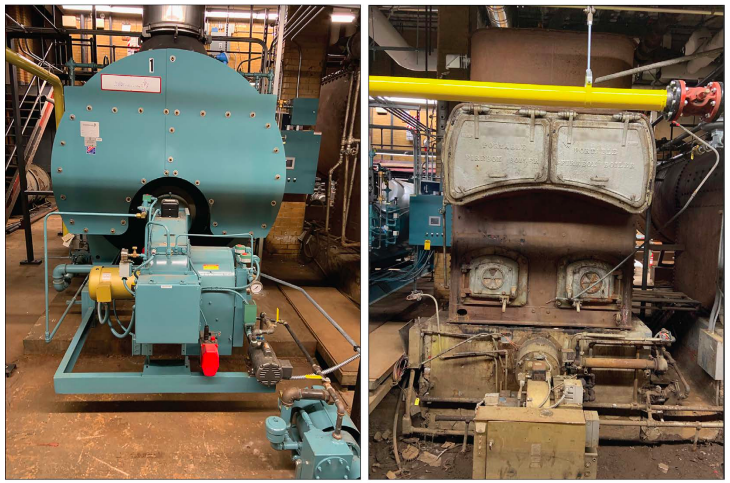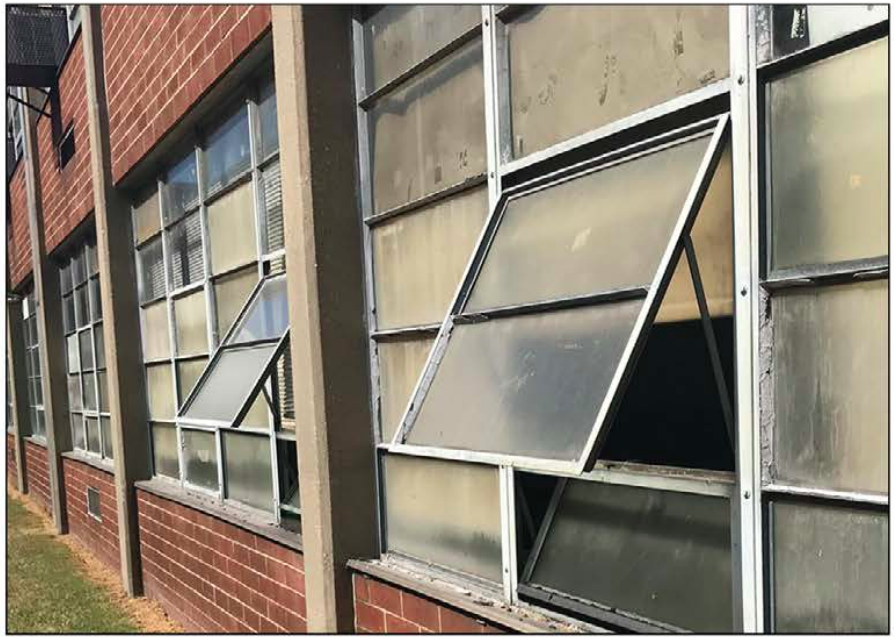Parents Want Better School Ventilation This Fall. But the Devil is in the Details — and the Expense

Get essential education news and commentary delivered straight to your inbox. Sign up here for The 74’s daily newsletter.
Last August, when Florida’s Hillsborough County Public Schools began upgrading air filters in their K-12 buildings, the event was so significant that news trucks showed up to document one of the first installations, at a Tampa elementary school.
When RAND Corp. researchers last spring presented parents with a list of 13 items that would make them feel safe about in-person schooling this fall, parents’ top priority wasn’t teacher or student vaccines, social distancing or regular COVID testing.
It was ventilation.
Perhaps that’s because COVID-19 has made our most basic act — breathing — newsworthy.
But therein lies the problem: In 2021, with an airborne virus still infecting Americans at a rate of about 15,000 daily, the heating and cooling systems in many U.S. public schools are nothing short of awful. Whether billions in new federal aid will be enough to help school districts upgrade an aging system anytime soon remains an open question.
While data on the scope of the problem are scarce, what little there are suggest that schools are looking at billions of dollars in deferred maintenance. A few examples:
- In Worcester, Mass., the district last summer said it would spend $15 million to upgrade heating and cooling systems in its 44 schools, some of which date back to the 1800s. Nearly half of its schools were built before 1940;
- In Denver, the school board unanimously approved spending $4.9 million to upgrade school heating, ventilation, and air conditioning systems in more than 150 buildings after former Superintendent Susana Cordova said parents had been asking her specifically about HVAC upgrades.
Like many issues, this one hits low-income students hardest.
In a 2014 study of school facilities by the National Center for Education Statistics and Westat, researchers found that schools serving the largest percentage of low-income students also had the largest percentage of air ventilation/filtration systems rated “fair or poor” in permanent buildings.
The study found that in schools with the highest concentration of low-income students, 33 percent had such troubled systems. In schools with the lowest concentration, it was 27 percent.
In the RAND survey, nearly three in four parents put school air quality at the top of their school wishlist. Even among a subgroup of parents who were unsure whether they’d even send their kids back to school, ventilation came in as the most important safety indicator.
The dilemma is resonating beyond parents: Last fall, the non-profit Public Employees for Environmental Responsibility (PEER), filed a complaint with the New York State Labor Department on behalf of 44 employees in nine public school campuses across New York City, saying most school buildings were improperly ventilated. It also said the city’s “minimalistic” ventilation standards don’t prevent the spread of the virus that causes COVID-19. The group wants inspectors to determine whether schools are ventilated and filtrated to adequately protect teachers, students, and staff.
Kyla Bennett, the group’s New England director, said the conditions in these schools were “pretty horrifying.”
“The inspections that they had done, most of the schools did not have windows that opened (in) the classrooms. They didn’t have the correct supply ventilation or exhaust ventilation in the rooms. I mean, some of them literally had zero ventilation.”

She understands why windows in some cases don’t open. “There’s noise out there. There’s pollution. …There’s danger, especially for small children, if the windows open wide enough. But the bottom line is that in order to make the schools safe for not just the students, but for the staff and the teachers, we need to improve the ventilation in the schools.”
Nathaniel Styer, a city schools spokesperson, said the district’s public schools “were some of the safest places to be during this pandemic because of our focus on ventilation and safety. We ended the year with a .03 percent positivity rate, which never went above 1 percent and was consistently far below the city average. Our schools are safe and if any repairs need to be made to ventilation systems the impacted classrooms are closed until the problem is fixed.”
Styer said the district only uses classrooms in which ventilation systems are working and operational, with the means to bring fresh air inside, circulate it, and ventilate the air outside. He also said every room was inspected multiple times by professional engineers and union inspectors.
The high costs of building repairs — as well as other priorities and the political gridlock gripping Washington, D.C. — likely mean that most families won’t get their school ventilation wishes granted by the time students return this fall.
Last December’s $900 billion Covid-19 stimulus measure, as well as President Biden’s proposed infrastructure legislation, could change conditions in schools. The stimulus includes $54.3 billion for states and school districts to shore up school facilities, including HVAC systems. But schools’ total price tag could be billions more, recent estimates suggest.
Biden’s infrastructure bill could help as well. It proposes $50 billion in direct grants and another $50 billion leveraged through bonds to upgrade and build public schools. While its fate remains up in the air, a bipartisan group of congressional lawmakers last week endorsed a slimmed-down version of the proposal. A summary of the “Rebuilding America’s Infrastructure” plan by the Problem Solvers Caucus endorses upgrading schools’ internet systems, but doesn’t mention school ventilation.
Needed: $1 million — or more — per building
Much of what we know about school infrastructure these days comes from a 2020 study by the U.S. Government Accountability Office, which surveyed school districts and found that 54 percent needed to update or replace “multiple building systems” including HVAC. An estimated one in three schools needed to update their systems, it found. And 41 percent of districts needed to update or replace HVAC systems in at least half of their schools, totaling about 36,000 nationwide.
The price tag for upgrading these systems: about $1 million per building. If half of the 36,000 buildings get upgrades and the rest get entirely new HVAC systems, it could cost schools about $72 billion, the non-profit Learning Policy Institute estimated.

Among educators themselves, the problem is hardly hidden — actually, most of them would agree with RAND’s findings, calling ventilation an urgent problem. When the American Society of Civil Engineers earlier this year graded infrastructure systems nationwide, ventilation upgrades topped schools’ most pressing concerns. More than half of districts — 53 percent — reported that they need to update or replace multiple building systems, including HVAC. The report estimated that schools need a cumulative $870 billion in repairs. Taxpayers are currently investing only $490 billion, the group said, leaving a $380 billion shortfall.
While the engineers’ group gave the nation’s overall infrastructure a grade of C-, it was even tougher on our public schools, handing them a grade of D+.
It noted that in the decade between fiscal years 2008 and 2017, state capital funding for schools fell 31 percent, the equivalent of a $20 billion cut. In that period, 38 states cut school capital spending as a share of the state economy.
One of the report’s authors, California civil engineer Dan Cronquist, said in an interview that HVAC upgrades and replacements topped all other school officials’ concerns, including roofing, lighting, safety, plumbing, and even asbestos, lead, and mold remediation.
Air quality, he said, is “a big issue,” but he acknowledged that educators have a lot on their plates. “School buildings are not as a high-priority in some districts as other expenses.”
When GAO researchers visited school districts in six states last year, they found that security “had become a top priority,” often taking precedence over spending on building systems such as HVAC. It also found that in about half of districts nationwide, funding for school facilities came primarily from local sources such as property taxes.
In most cases, schools can’t rely on federal funding for ongoing, needed repairs, unless they’re located on military bases, receive federal Impact Aid, or are charter schools.
Upgrades don’t necessarily mean better air quality
CDC guidelines suggest that schools use “multiple mitigation strategies” to lower the risk of exposure, such as improving building ventilation, as well as masks and distancing. While most buildings won’t actually require new ventilation systems, CDC says, upgrades or improvements “can increase the delivery of clean air and dilute potential contaminants.” In buildings that are already up to code, it suggests using window fans, improving filtration, and using portable high-efficiency particulate air filtration systems, among other measures.
Even if they get upgrades, schools may not automatically enjoy better air quality if they don’t maintain and operate the systems properly.

In a study published last year, before the pandemic hit, researchers from Lawrence Berkeley National Laboratory and the University of California, Davis, visited 104 California classrooms that had recently been retrofitted with new HVAC units. About half had high CO2 concentrations, researchers found, and many were “under-ventilated,” likely due to improperly selected equipment, poor maintenance, or other issues.
The researchers concluded that better oversight of HVAC installation, as well as periodic testing and CO2 monitoring, would improve ventilation.
As for conditions in New York City schools, the PEER complaint is on hold after the state Public Employee Safety and Health Bureau said it didn’t have jurisdiction over COVID-19 cases, Bennett said. “We’re looking at our options, but there’s no quick solution here.”
She added, “The bottom line is that this pandemic, this isn’t the end. This is something that’s going to be hanging over our heads — whether it’s COVID-19, that still hasn’t gone away, or whether it’s the next pandemic — we need to make sure that the ventilation in our schools is better than it is, because it’s not a safe working environment.”
Help fund stories like this. Donate now!

;)
